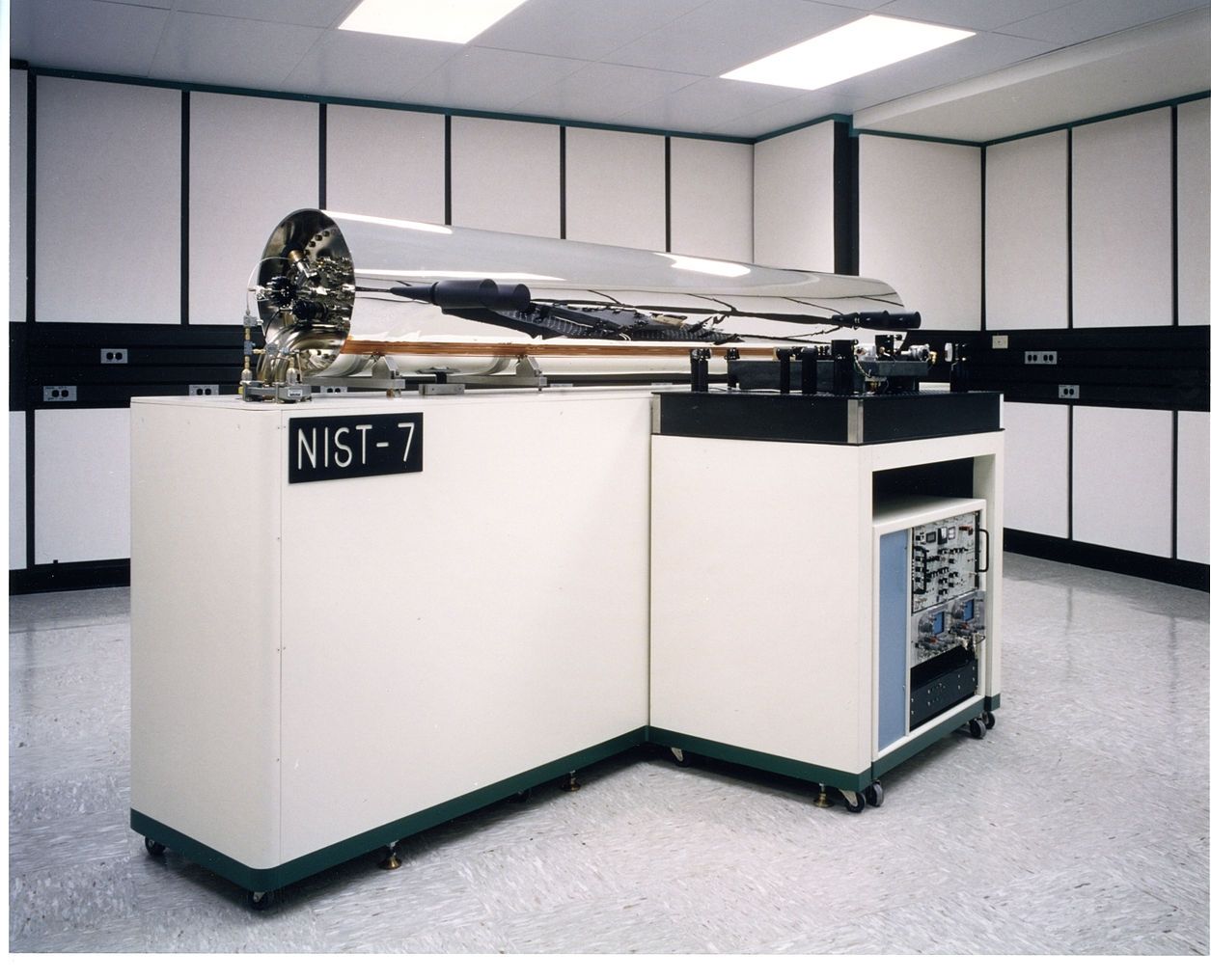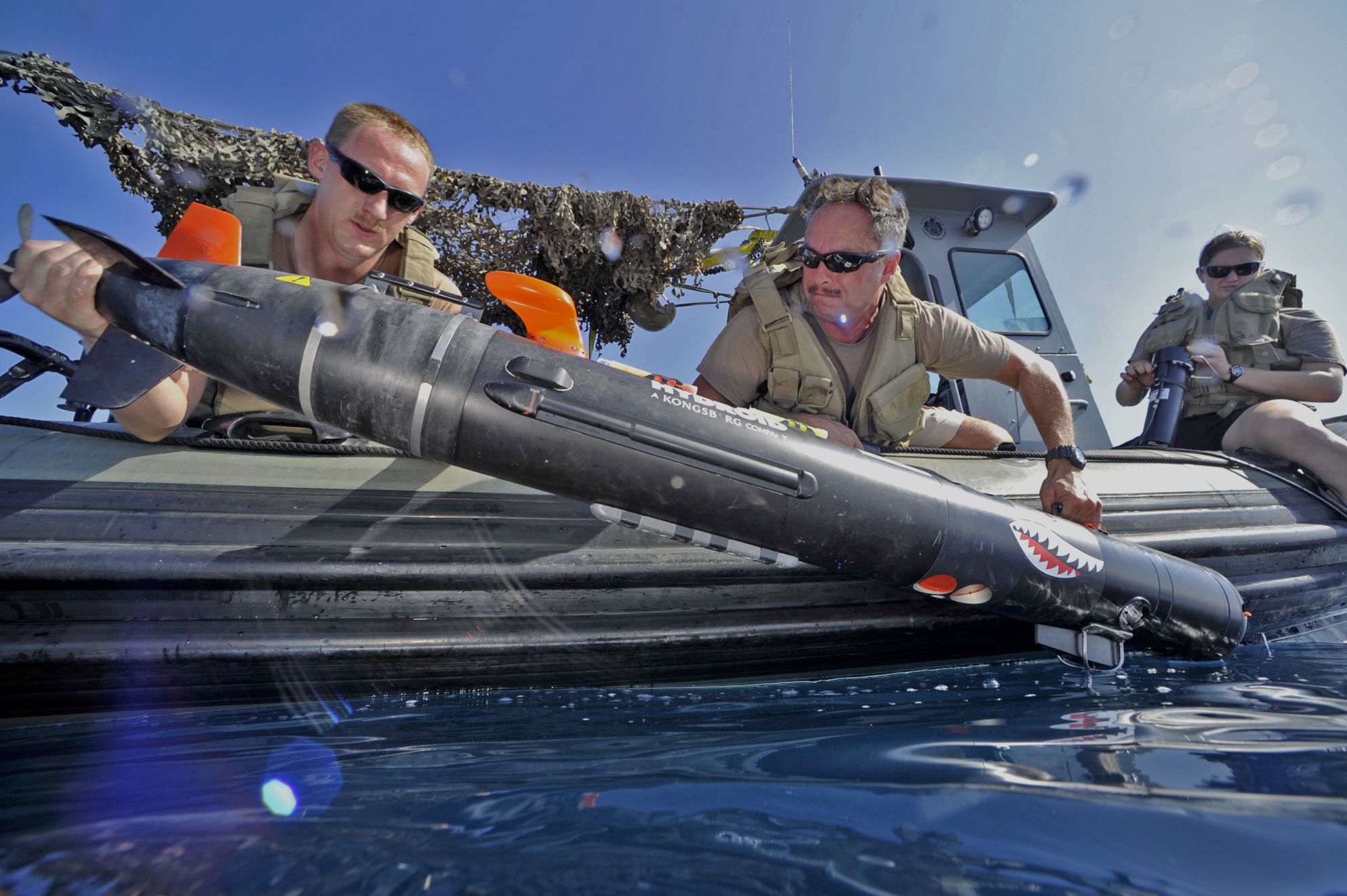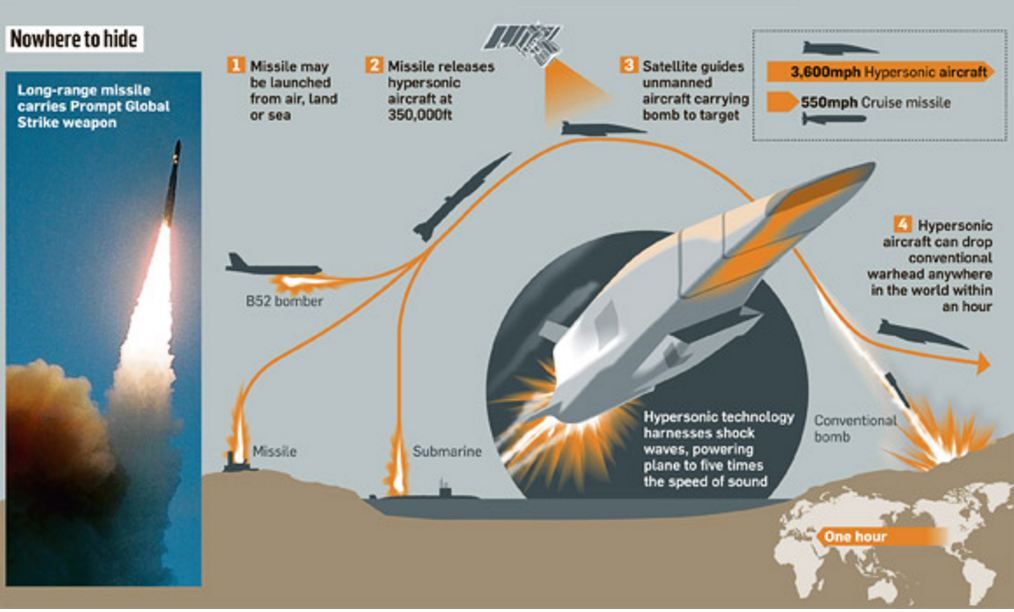DARPA’s quest to perfect the portable clock for GPS, and other military assets. Time release perfected is a nice added feature.
Time for an upgrade.


Russia is working to deploy a revolutionary hypersonic maneuvering strike missile by 2020, according to a Russian defense industry leader.
Boris Obnosov, director of the state-run Tactical Missiles Corp., told a Russian news agency the new hypersonic missile will be capable of penetrating advanced missile defenses and represents a revolutionary advance in military technology.
“It’s obvious that with such speeds—when missiles will be capable of flying through the atmosphere at speeds of seven to 12 times the speed of sound, all [air] defense systems will be weakened considerably,” Obnosov told the Rambler News Service this week.


Hmmmm.
The U.S. Navy and Marine Corps should advance the way they use unmanned systems, favoring greater autonomy over remotely-controlled missions and developing multi-vehicle systems such as swarms and cascaded operations, according to a recently released report by the Defense Science Board.
The DSB report, requested by the Pentagon’s acquisition chief in November 2014, notes a variety of Pentagon-wide challenges in developing, testing, fielding and operating autonomous systems, such as operator trust, cyber security and developing a test and evaluation plan for learning systems.
Specific to the Navy, the board recommends adding greater autonomy to Navy counter-mine unmanned underwater systems as a way to save time and keep personnel even farther from potential dangers.

Ever wanted to down a neighborhood nuisance drone and couldn’t? Or maybe you have some frustration that has built over time and want to release it. Well, here is your chance. DARPA wants you to down a rogue drone.
The Pentagon’s futuristic think tank is thinking about how to stop errant drones and it wants the public’s help. The Defense Advanced Research Projects Agency’s Tactical Technology Office this week announced a request for information to help create “novel, flexible, mobile layered” anti-drone soluti…

I see a future in TSA, FBI, CIA, local law enforcement, insurance companies’ fraud units, etc.
Purdue is leading part of an international effort to develop a system for the military that would detect doctored images and video and determine specifically how they were manipulated.
“This team has some of the most senior and skilled people out there in the field, some of whom helped to create the area of media forensics,” said Edward Delp, Purdue’s Charles William Harrison Distinguished Professor of Electrical and Computer Engineering, in a press release.
The project is funded over four years with a $4.4 million grant from the U.S. Defense Advanced Research Projects Agency (DARPA). The research also involves the University of Notre Dame, New York University, University of Southern California, University of Siena in Italy, Politecnico di Milano in Italy, and University of Campinas, in Brazil.

Good; glad they are hearing us. Because it is a huge issue for sure especially with some of the things that I seen some of the researchers proposing to use CRISPR, 3D Printers, etc. to create some bizarre creatures. Example, in March to scientists in the UK wanted to use CRISPR to create a dragon; personally I didn’t expect it to be successful. However, the scientists didn’t consider the fallout to the public if they had actually succeeded.
For a few hundred dollars, anyone can start doing genetic editing in the comfort of their own home.
Want to be the next Captain Kirk or Spock; we’re getting more close of being a Star Trek & Star Wars world with drones and fighter jets with death lasers, cyborgs with BMI technology, sabers being developed, and now the Star Trek phaser is being developed.
Every year Star Trek’s futuristic sci-fi technology comes closer to just being “technology.” We live in a world where video chats, communicators, and real-time translators are normal, where androids are becoming more and more realistic and food replicators are almost here thanks to 3D printing. The next step? Phasers!
Next month the Smithsonian Channel will air a two-hour Star Trek special to celebrate the show’s 50th Anniversary, which will take a look at some of the technologies the show predicted. In this just-released segment of Building Star Trek, future phaser use is predicated by laser scientist Rob Afzal of Lockheed Martin who, let’s be honest, has one of the coolest titles in the world. (“What do you do?” “I’m a LASER SCIENTIST.”)

Among others, the Pentagon is funding the Lockheed Martin Falcon Hypersonic Technology Vehicle 2 (HTV-2) program; the Raytheon Hypersonic Air-breathing Weapon Concept (HAWC) and the Raytheon/Lockheed Tactical Boost Glide (TBG) program.
HTV-2 is a multiyear research and development effort to increase the technical knowledge base and advance critical technologies to make long-duration hypersonic flight a reality. The Falcon HTV-2 is an unmanned, rocket-launched, maneuverable aircraft that glides through the Earth’s atmosphere at Mach 20.
HAWC is a joint DARPA/ Air Force effort to develop and demonstrate critical technologies that enable an effective and affordable air-launched hypersonic cruise missile. It will pursue flight demonstrations to address three critical technology challenges: air vehicle feasibility, effectiveness, and affordability.
